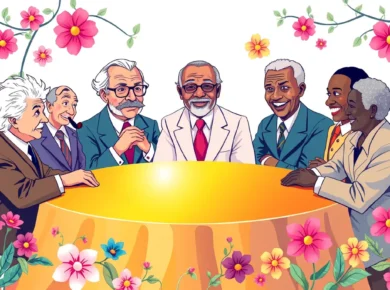What is Distributive Bargaining?
Distributive bargaining is a type of negotiation strategy where one party tries to maximize their gains at the expense of the other party. This approach is often used in situations where there is a fixed pie to be divided, and each party wants to get the largest share possible. In distributive bargaining, the goal is to claim as much value as possible, even if it means the other party gets less.
Distributive bargaining is commonly seen in business negotiations, labor disputes, and international diplomacy. It’s a competitive approach that requires a deep understanding of the other party’s needs, interests, and limitations. To succeed in distributive bargaining, you need to be able to make persuasive arguments, use effective tactics, and be willing to walk away if the deal isn’t favorable.
Characteristics of Distributive Bargaining
Distributive bargaining has several distinct characteristics that set it apart from other negotiation strategies. Some of the key features of distributive bargaining include:
-
Competitive mindset: Distributive bargaining is all about winning and getting the best deal possible. It’s a competitive approach that requires a strong desire to succeed.
-
Fixed pie: In distributive bargaining, there is a fixed amount of value to be divided. The goal is to get as much of that value as possible.
-
Zero-sum game: Distributive bargaining is a zero-sum game, meaning that one party’s gain is equal to the other party’s loss.
-
Limited information: In distributive bargaining, information is often limited, and parties may not be willing to share their true interests or needs.
-
Use of tactics: Distributive bargaining often involves the use of tactics such as bluffing, anchoring, and time pressure to gain an advantage.
Examples of Distributive Bargaining
Distributive bargaining is commonly seen in various aspects of life, including:
-
Business negotiations: Companies may use distributive bargaining to negotiate prices, contracts, or other business deals.
-
Labor disputes: Unions and management may engage in distributive bargaining to negotiate wages, benefits, and working conditions.
-
International diplomacy: Countries may use distributive bargaining to negotiate trade agreements, border disputes, or other international issues.
-
Real estate transactions: Buyers and sellers may engage in distributive bargaining to negotiate the price of a property.
Strategies for Effective Distributive Bargaining
To succeed in distributive bargaining, you need to have a solid understanding of the negotiation process and be able to use effective strategies. Some of the key strategies for effective distributive bargaining include:
-
Prepare thoroughly: Research the other party’s needs, interests, and limitations to develop a strong negotiation strategy.
-
Set clear goals: Determine what you want to achieve in the negotiation and be willing to walk away if your goals aren’t met.
-
Use persuasive arguments: Make strong, logical arguments to support your position and persuade the other party.
-
Use time to your advantage: Take time to think before making a concession, and use time pressure to your advantage.
-
Be willing to walk away: If the deal isn’t favorable, be willing to walk away and explore other options.
Common Tactics in Distributive Bargaining
Distributive bargaining often involves the use of tactics to gain an advantage. Some common tactics used in distributive bargaining include:
-
Anchoring: Making an extreme offer to set the tone for the negotiation.
-
Bluffing: Making a false statement or threat to influence the other party’s behavior.
-
Good guy/bad guy: Using a team of negotiators to play the role of good guy and bad guy to influence the other party’s behavior.
-
Take-it-or-leave-it: Making a final offer and refusing to negotiate further.
Overcoming Challenges in Distributive Bargaining
Distributive bargaining can be challenging, especially when dealing with complex issues or difficult negotiators. Some common challenges in distributive bargaining include:
-
Cultural differences: Negotiating with people from different cultural backgrounds can be challenging due to differences in communication styles and norms.
-
Power imbalance: Negotiating with someone who has more power or resources can be challenging.
-
Emotional involvement: Becoming too emotionally invested in the negotiation can lead to poor decision-making.
FAQ
What is the difference between distributive bargaining and integrative bargaining?
Distributive bargaining is a competitive approach where one party tries to maximize their gains at the expense of the other party. Integrative bargaining, on the other hand, is a collaborative approach where parties work together to find a mutually beneficial solution.
Is distributive bargaining always effective?
No, distributive bargaining is not always effective. It can lead to a win-lose outcome, which may damage relationships and lead to future conflicts.
Can distributive bargaining be used in personal relationships?
While distributive bargaining is often used in business and professional settings, it’s not recommended for personal relationships. Distributive bargaining can lead to conflict and damage relationships.
Conclusion
Distributive bargaining is a common negotiation strategy used in various aspects of life. To succeed in distributive bargaining, you need to have a solid understanding of the negotiation process, be able to use effective strategies, and be willing to walk away if the deal isn’t favorable. By understanding the characteristics, examples, and strategies of distributive bargaining, you can improve your negotiation skills and achieve better outcomes.










